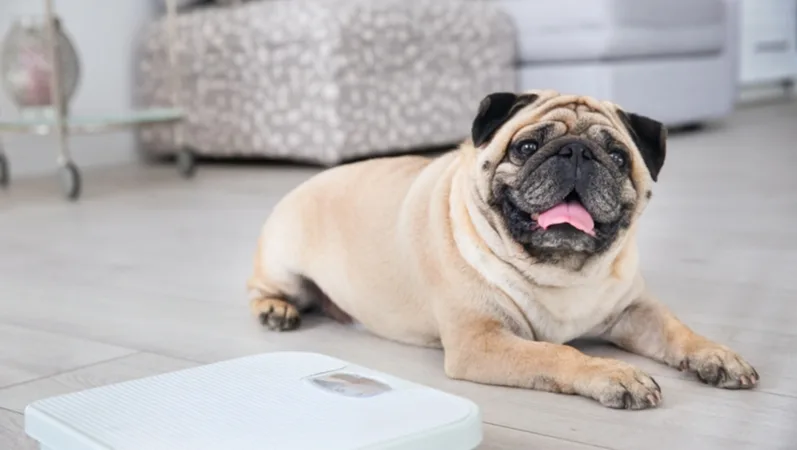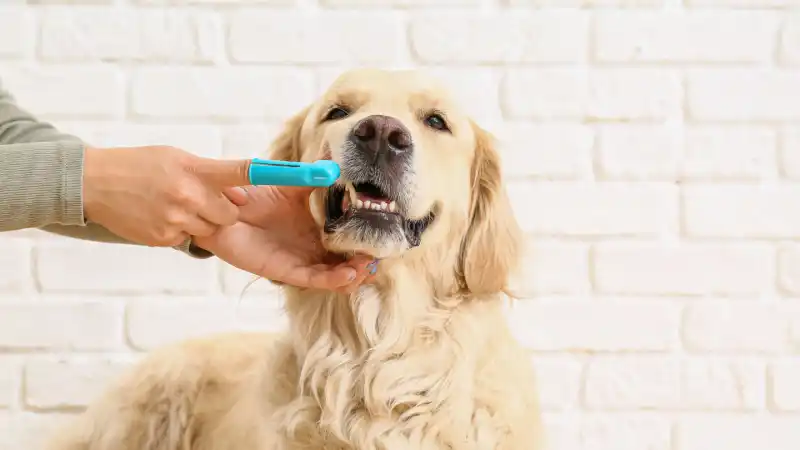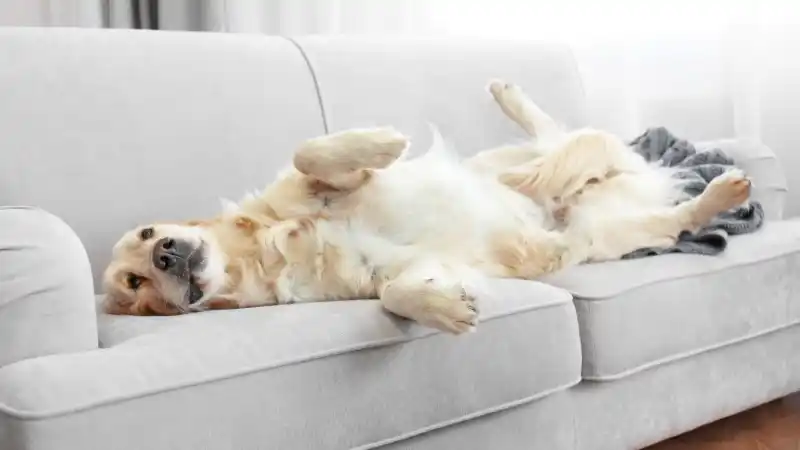Best Exercises for Overweight Dogs
Learn about the health risks that are associated with dog obesity, how to tell if your pup is overweight, and exercises that can help your dog lose weight. .

You may think your chunky pup is adorable, but excess weight can lead to a variety of health problems in dogs. That's why it's so important to make sure your four-legged friend maintains a healthy weight.
Sticking to a regular feeding schedule and limiting unhealthy treats are two of the best ways to prevent weight gain in dogs. But physical exercise is also essential for controlling your dog's weight and keeping them healthy and fit.
In this article, we'll look at some of the best activities for overweight dogs. But first, let's look at how to tell if your pup is overweight and some of the health risks associated with obesity.
How to Tell if Your Dog Is Overweight
Dogs come in a wide range of shapes and sizes, so it may not always be obvious when they're overweight. However, a general understanding of your dog's body type can help you determine if they're carrying excess weight.
In addition to being aware of your dog's natural build and weight, here are some telling signs that your dog is overweight or obese:
A poorly defined waistline or abdominal sagging
Excessive panting after minimal activity
Reduced mobility and difficulty rising
A decreased interest in playing or exercise
Tiredness and a general lack of energy
If your dog displays any of these signs, it's time to take action and start helping them lose weight to prevent health problems down the road.
Health Risks of Obesity in Dogs
As mentioned earlier, obesity can lead to a wide range of health problems in dogs. Some of these potential risks include:
Breathing and respiratory problems
Cancer
Diabetes
Heart disease
High blood pressure
Hypertension
Joint degeneration
Kidney disease
Liver disease
Mobility issues
Obesity can also be a sign of an underlying health condition, such as hypothyroidism or Cushing's disease. So, if you're concerned that your dog may be overweight, it's important to check in with your veterinarian.
Work With Your Vet to Create a Weight Loss Plan
Your veterinarian can help you determine if your dog is overweight and create a weight loss plan tailored to their individual needs. This may involve making changes to their diet, such as feeding a reduced-calorie food or switching to a specific weight loss diet.
Your vet may also recommend increasing your dog's physical activity. This could involve starting a regular walking routine or playing fun games that get your pup moving. In the next section of this article, we'll look at some of the best activities for helping your overweight dog lose weight.
Activities for Overweight Dogs
Dogs need regular exercise to maintain a healthy weight, just like people. Unfortunately, many overweight dogs are inactive due to their excess weight. But don't worry – there are plenty of fun activities you can do with your pup to help them stay active and lose weight. Here are a few ideas:
Low Impact Activities
Low impact activities are a great way to get your overweight dog moving without putting too much strain on their joints and muscles. These activities are perfect for dogs that are new to exercise or those that are recovering from an injury.
Walking
A simple walk around the block is a great way to increase your dog's activity levels and help them lose weight. Start with a short walk and gradually increase the distance as your dog becomes more active.
Swimming
Swimming is a fantastic exercise for dogs of all ages and abilities. It's low impact, fun, and helps to cool your pup down on hot days.
Hiking
If you live near a forest or nature reserve, take your dog for a hike. Just make sure you start with a short hike and work your way up to longer distances.
Transitional Activities
The following activities can be used as either low or high impact, depending on the speed and duration. This also makes them great tools as you work to gradually increase your dog's fitness level or transition from low to high impact activities when they're ready for more of a challenge.
Treadmill
Treadmill training is an alternative to outdoor walking and can be used as a low impact or high impact activity, depending on your dog's abilities.
Fetch
Playing fetch with a frisbee, ball, or other toy is a great way to get your dog moving. You can start with a low-impact game of fetch and gradually increase the intensity as your dog gets more fit.
High Impact Activities
Elevated heart rate, increased muscle engagement, and more pressure on joints and paws are key features of high-impact activities. Work up to high-impact activities slowly and be sure to talk with your veterinarian before starting any new activity with your dog.
Running
Increasing speed from a walk to a run is the most effective way to burn additional calories.
Walking with a pack
Just as humans lift weights to increase muscle and shed calories, your dog can do the same. Having your dog carry a pack that is 10-12% of their body weight will add resistance and help them to burn more calories.
Easing Your Dog into Exercise
Regardless of the exercises you choose to engage your dog in, it's important to work into it slowly. You wouldn't jump into a triathlon or marathon without any training, and physical fitness for your dog is no different!
Begin with shorter spurts of low-intensity activities and gradually increase the amount of time and intensity. This will help to ensure your dog doesn't get injured and can safely and effectively lose weight.
When beginning higher intensity activities remember to lower the amount of participation time – at least to start with. You can encourage your dog with treats when starting new activities to help them build a positive association. These are critical steps when increasing your dog's physical fitness levels to avoid potential joint damage and disengagement.
It's also important to be aware of your dog's body language and behavior. Excessive panting is a key indicator that you need to slow down or take a step back in intensity. To avoid overheating during warm weather, take breaks in the shade, decrease the amount of time, or choose cooler times of the day to be active.
The Bottom Line
There are many ways to get your dog moving and help them lose weight, but it's important to do so safely. Work up to higher intensity activities slowly and be sure to always monitor your dog for signs of overheating or exhaustion.
Before starting a new exercise regime, be sure to consult with your veterinarian to ensure it's the best fit for your dog. And most importantly, have fun with it! Dogs love to be active and spending time with you is the best reward of all.
Pet insurance can help pay for unexpected vet bills. Get a dog insurance quote from AKC Pet Insurance today (underwritten by Independence American Insurance Company) and prepare for accidents, illnesses, and much more.

Every Dog and Cat Deserves the Pet Insurance of Champions
Get prize-winning care for your pets.

Richard has shared his life with pets since childhood, and currently has a rescue cat and dog. He works with veterinarians and pet businesses to improve their content. To find out more, please visit his [website](https://richardrowlands.com/).
READ MORE ARTICLES

